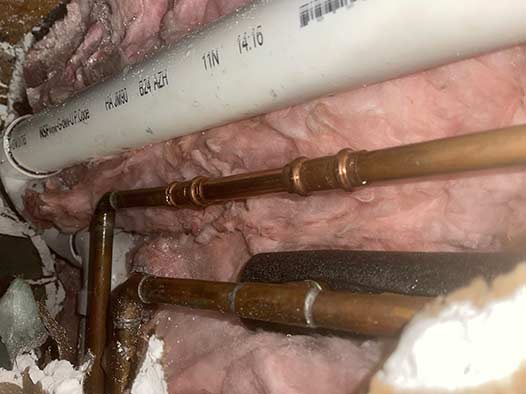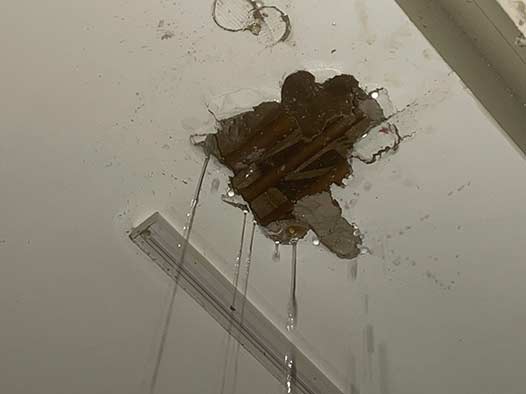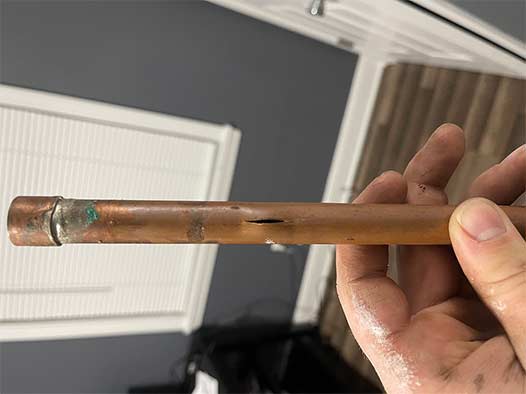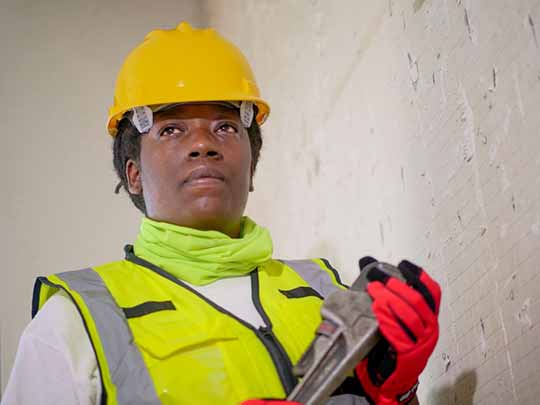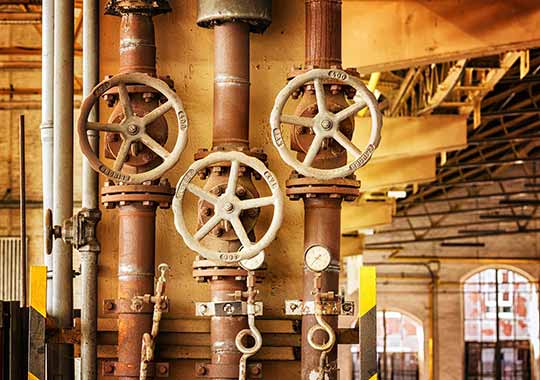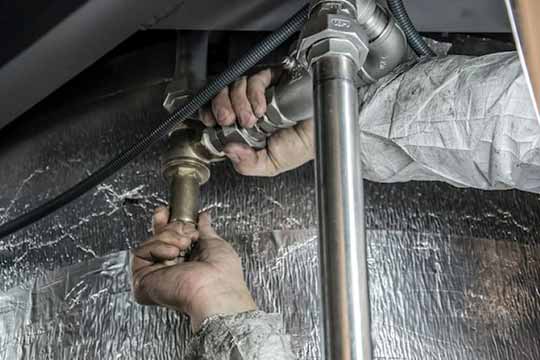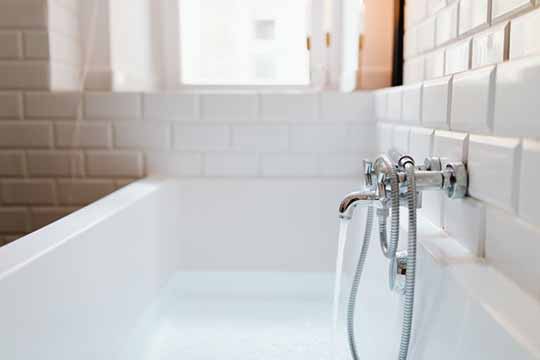Understanding Burst Pipes: An Essential Guide for Homeowners
Burst pipes present a prevalent and potentially damaging problem for homeowners. Understanding the underlying causes, associated dangers, and effective prevention methods is paramount for safeguarding your property. Here we aim to equip homeowners with the essential knowledge needed to manage and prevent burst pipes effectively.
What Causes Pipes to Burst?
The occurrence of burst pipes can be attributed to various factors. Insight into these causes empowers homeowners to take proactive measures to mitigate risks. Understanding the primary reasons pipes burst can help in addressing and preventing issues effectively.
Extreme Weather Conditions: The Role of Freezing Temperatures
One of the most common causes of burst pipes is exposure to freezing temperatures. When water within the pipes freezes, it creates significant pressure due to the expansion of ice. This pressure can cause cracks and ultimately lead to pipes bursting. Homes in regions that experience harsh winters are particularly susceptible to this problem. It is essential to properly insulate pipes and maintain a stable internal temperature to prevent freezing and subsequent bursts.
Weak or Aging Pipes: Susceptibility to Damage
Over time, pipes may deteriorate due to wear and tear, corrosion, or poor maintenance. Aging pipes are more prone to cracks and weaknesses, increasing their likelihood of bursting. Regular inspection and timely maintenance of plumbing systems can identify and address aging pipes before they fail.
Improper Installation: The Importance of Professional Plumbing
Pipes that have been incorrectly installed or inadequately supported are prone to damage. Poor workmanship or subpar materials can contribute to pipe weaknesses and eventual bursts. Hiring professional and certified plumbers ensures that installations meet industry standards and reduce the risk of future issues.
Excessive Water Pressure: Managing Flow to Prevent Bursts
High water pressure can stress pipes and joints, increasing the likelihood of leaks and bursts. Homeowners should monitor and regulate water pressure levels, ensuring they fall within safe ranges. Installing pressure reducing valves and conducting routine checks can help maintain appropriate water pressure.
The Dangers of Burst Pipes: Understanding the Consequences
Burst pipes can lead to extensive damage and pose serious risks to properties and occupants. Recognizing the potential dangers underscores the importance of preventative measures and swift action in the event of a burst pipe.
Structural Damage: Impact on Building Integrity
Water from burst pipes can infiltrate walls, ceilings, and floors, leading to significant structural damage. Prolonged exposure to moisture can compromise the integrity of building materials, causing rotting, warping, and weakening of the structure. Addressing burst pipes promptly can mitigate extensive and costly repairs.

Water from burst pipes can infiltrate walls, ceilings, and floors, leading to significant structural damage. Prolonged exposure to moisture can compromise the integrity of building materials, causing rotting, warping, and weakening of the structure.
Mold and Mildew Growth: Health Hazards and Remediation
Persistent moisture from burst pipes creates an ideal environment for mold and mildew growth. These fungi can spread rapidly, posing health risks to occupants, including respiratory issues and allergic reactions. Professional remediation may be required to remove mold and restore safe living conditions.
Electrical Hazards: Ensuring Safety Precautions
Water exposure from burst pipes can come into contact with electrical systems, creating dangerous situations. Electrical shorts, fire hazards, and electrocution risks are potential consequences. It is vital to shut off the electrical supply in affected areas and seek professional electrical inspection and repair.
Increased Water Bills: Financial Implications of Leaks
Burst pipes result in continuous water leakage, leading to increased water bills and wastage. Identifying and having burst pipes repaired promptly conserves water and prevents unnecessary financial burdens on homeowners.
Prevention Strategies: Protecting Your Home Against Burst Pipes
Implementing preventative measures is crucial for safeguarding your home against the risks and damages associated with burst pipes. Homeowners can adopt various strategies to minimize vulnerabilities and enhance the resilience of plumbing systems.
Temperature Control: Maintaining a Warm Environment
Maintaining a consistent indoor temperature, especially in winter, helps prevent pipes from freezing. Using insulation on exposed pipes and keeping interior spaces warm can significantly reduce the risk of bursting. Homeowners should also allow faucets to drip during extreme cold to maintain water flow and alleviate pressure within the pipes.
Regular Inspections: Identifying and Addressing Issues
Routine inspections of plumbing systems can identify potential problems early. Homeowners should regularly check for signs of leaks, rust, corrosion, and weak spots in pipes. Hiring professional plumbers for periodic inspections ensures thorough assessments and timely repairs.
Upgrading Plumbing Systems: Investing in Durability
For homes with aging or outdated plumbing, upgrading to modern and more durable materials can avert potential failures. Consider repiping your home with materials such as PEX (cross-linked polyethylene), which offer greater flexibility and resistance to various stressors.
Pressure Regulation: Preventing Excessive Stress
Installing pressure-reducing valves or pressure regulators can help maintain safe water pressure levels within the plumbing system. Regular monitoring and adjustment of water pressure prevent excessive stress on pipes, reducing the risk of bursts.

Professional assistance ensures that the repairs are done correctly and any underlying issues are addressed to prevent future occurrences.
Sealing and Insulation: Protection Against Environmental Factors
Properly sealing and insulating areas where pipes are exposed to external elements, such as basements, attics, and crawl spaces, protects them from temperature fluctuations and potential freezing. Insulating pipes can significantly reduce the chance of bursts during cold weather.
Emergency Preparedness: Responding to Burst Pipes
Despite preventative measures, emergencies can still occur. Being prepared with an action plan ensures swift response and minimizes damage from burst pipes. Homeowners should familiarize themselves with the steps to take in the event of a burst pipe.
Shutting Off Water Supply: Immediate Action to Prevent Damage
The first step in managing a burst pipe is to shut off the main water supply to prevent further water flow and potential flooding. Knowing the location of the main shut-off valve and ensuring it is easily accessible is essential for quick response.
Contacting Professional Help: Ensuring Proper Repairs
After shutting off the water supply, contact a licensed plumber to assess and repair the damaged pipe. Professional assistance ensures that the repairs are done correctly and any underlying issues are addressed to prevent future occurrences.
Mitigation of Water Damage: Protection Against Long-Term Issues
Promptly drying and ventilating affected areas helps mitigate water damage. Using dehumidifiers and fans can accelerate the drying process. For extensive damage, professional water damage restoration services may be necessary to fully restore affected areas.
Documenting the Damage: Insurance and Financial Considerations
Documenting the damage caused by burst pipes with photographs and detailed notes is essential for insurance claims. Homeowners should contact their insurance providers promptly to report the incident and initiate the claims process for coverage of repairs and restoration.
Conclusion: Staying Informed and Proactive
Understanding the causes, dangers, and prevention of burst pipes equips homeowners with the knowledge needed to protect their properties effectively. By staying proactive and informed, homeowners can minimize the risks and ensure the longevity and integrity of their plumbing systems.

